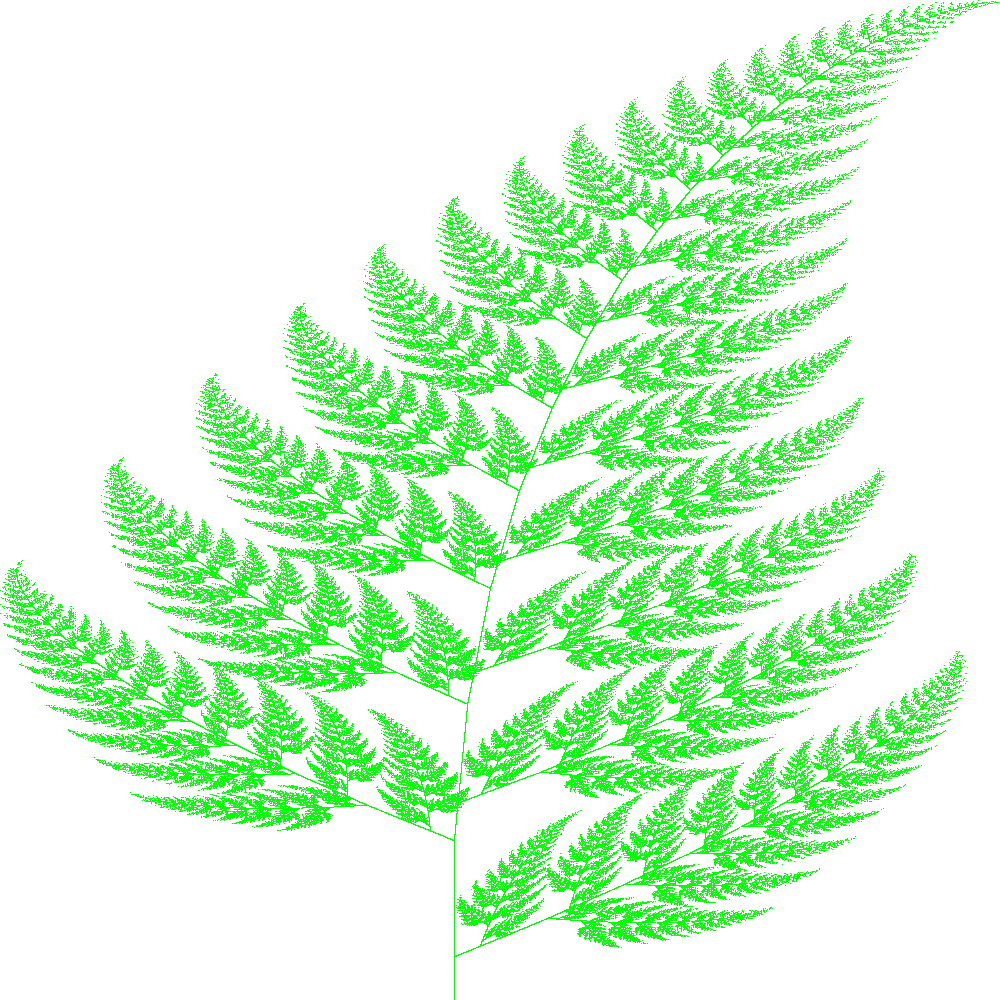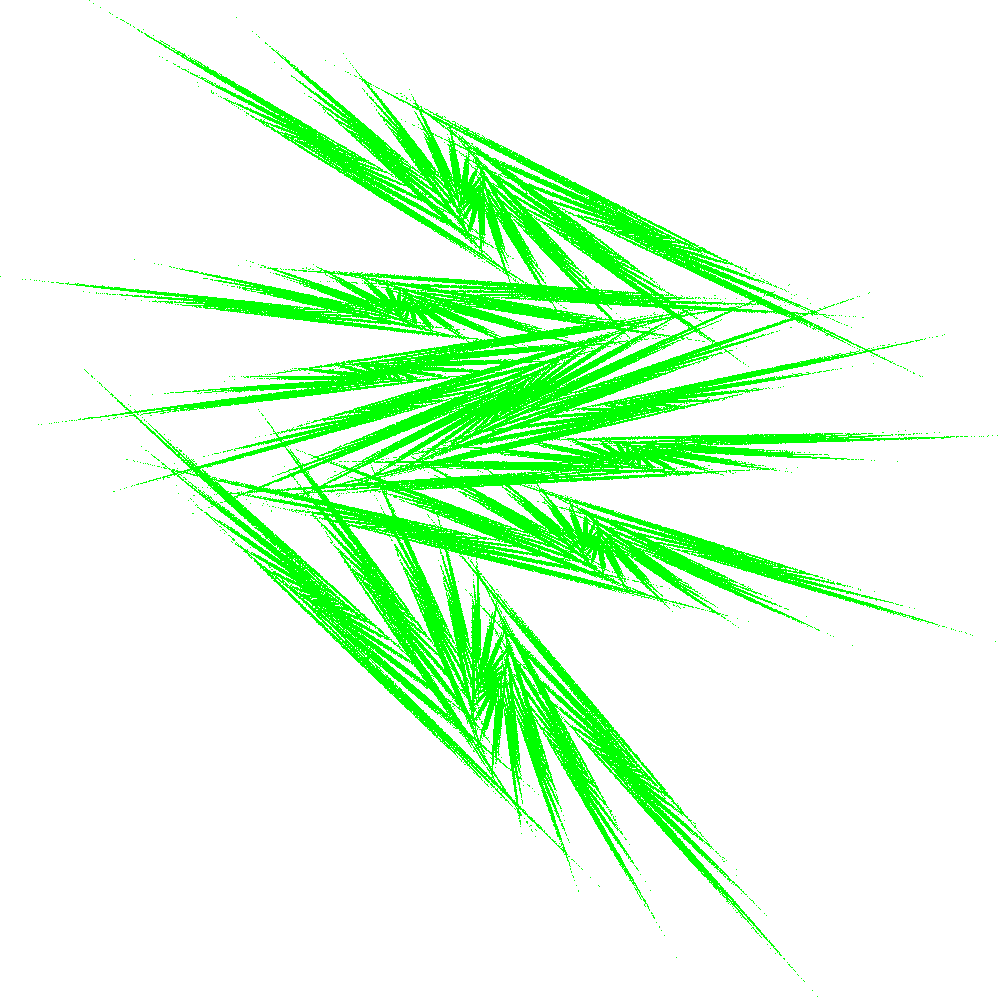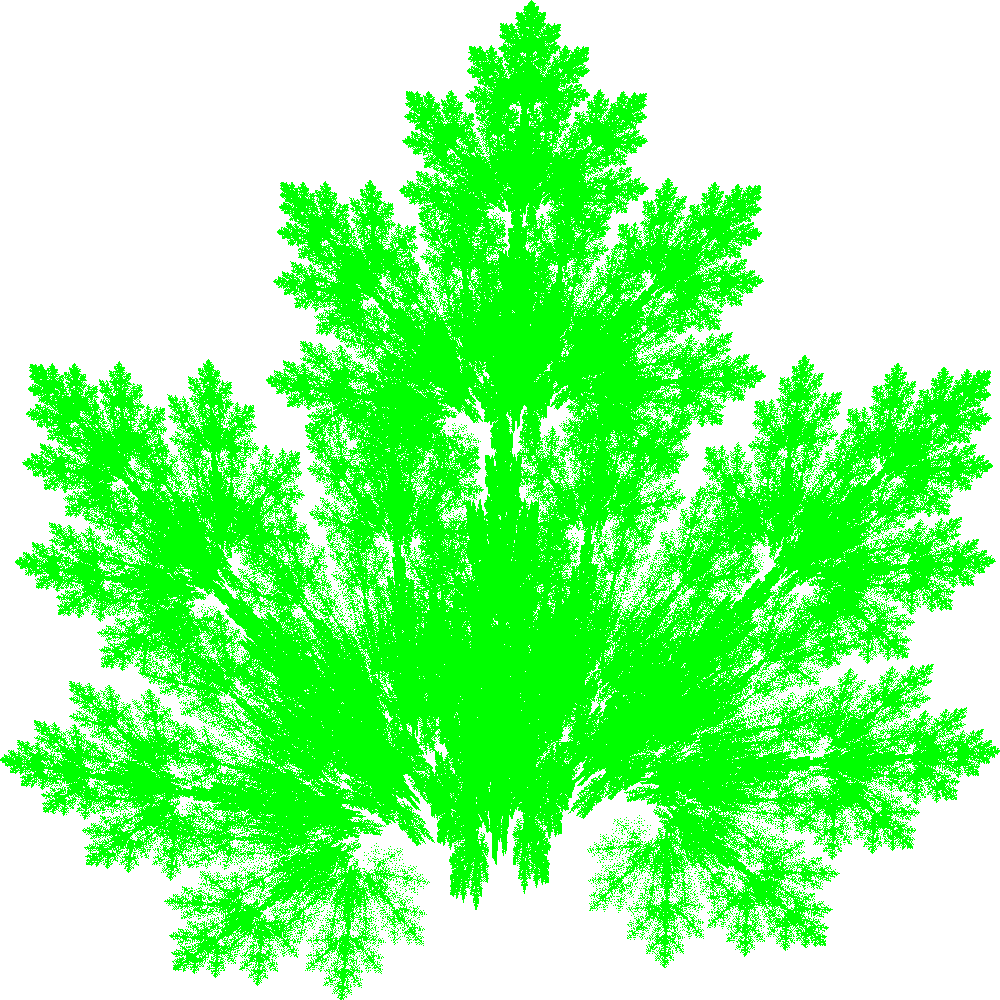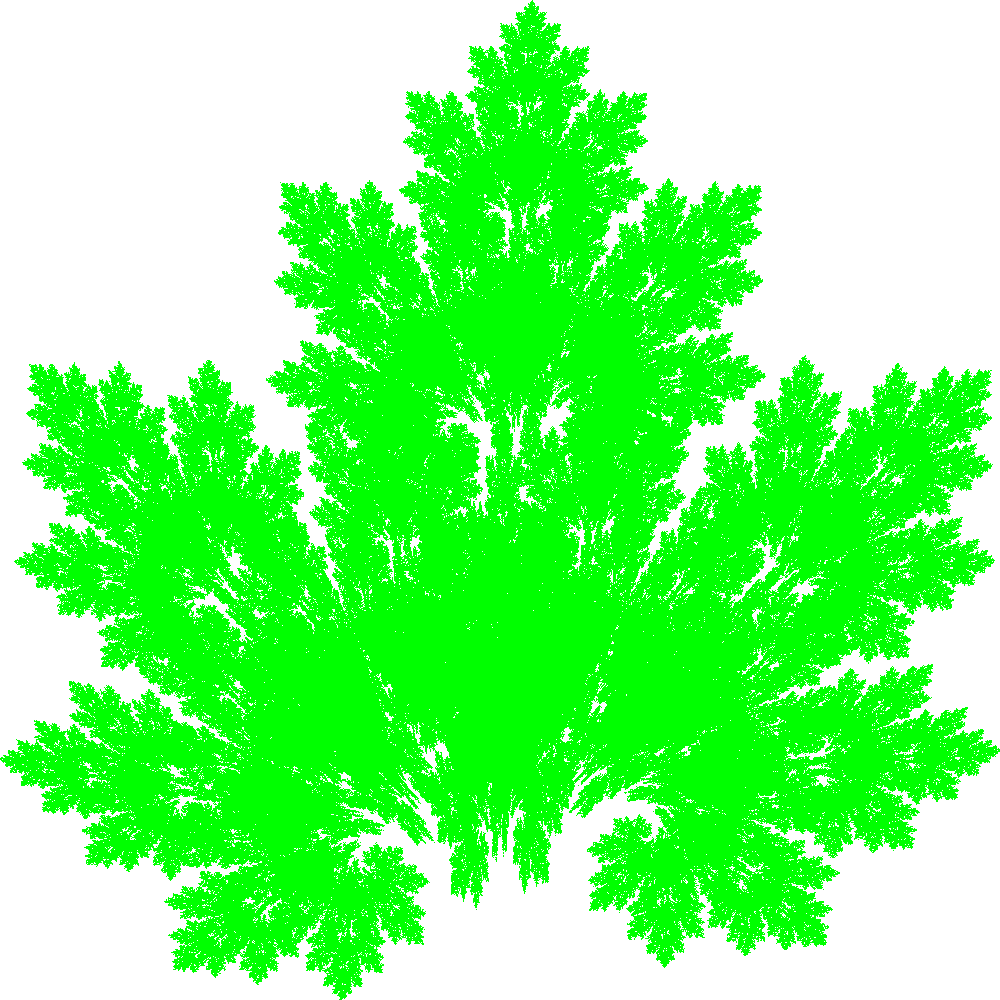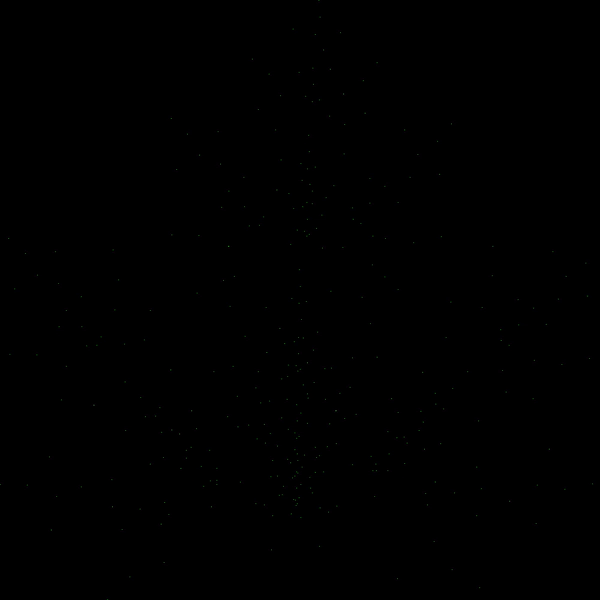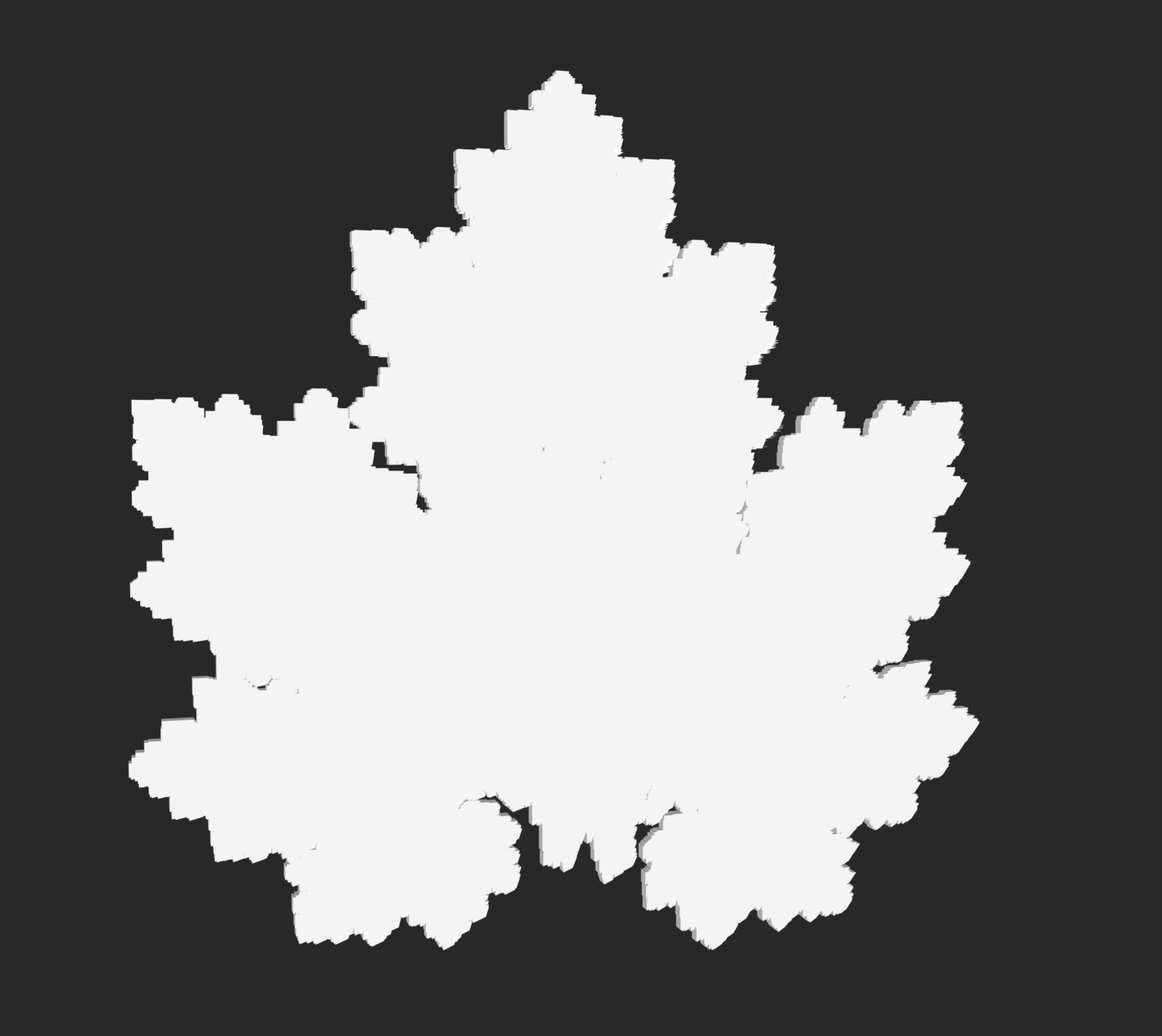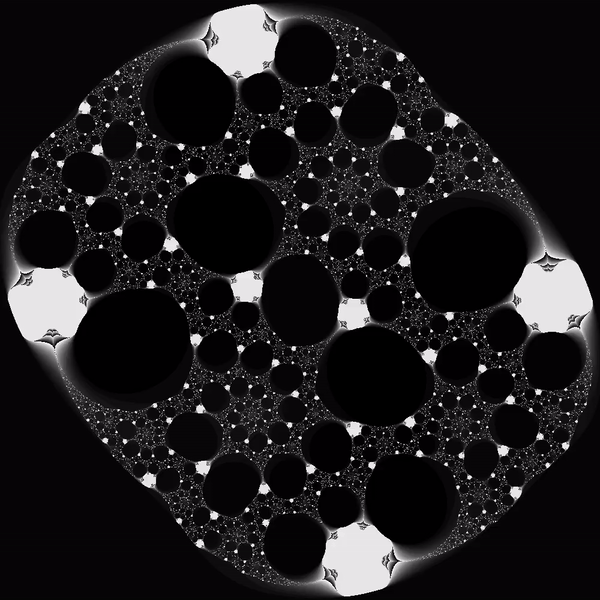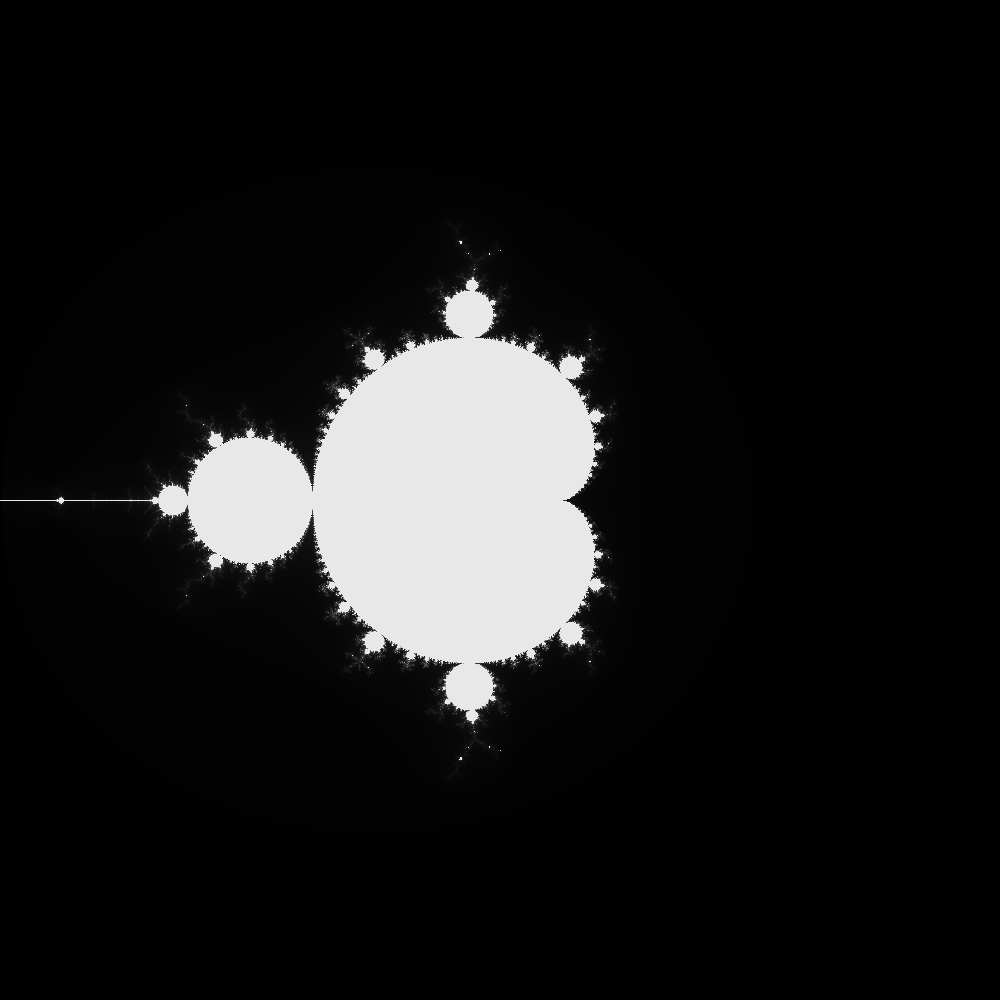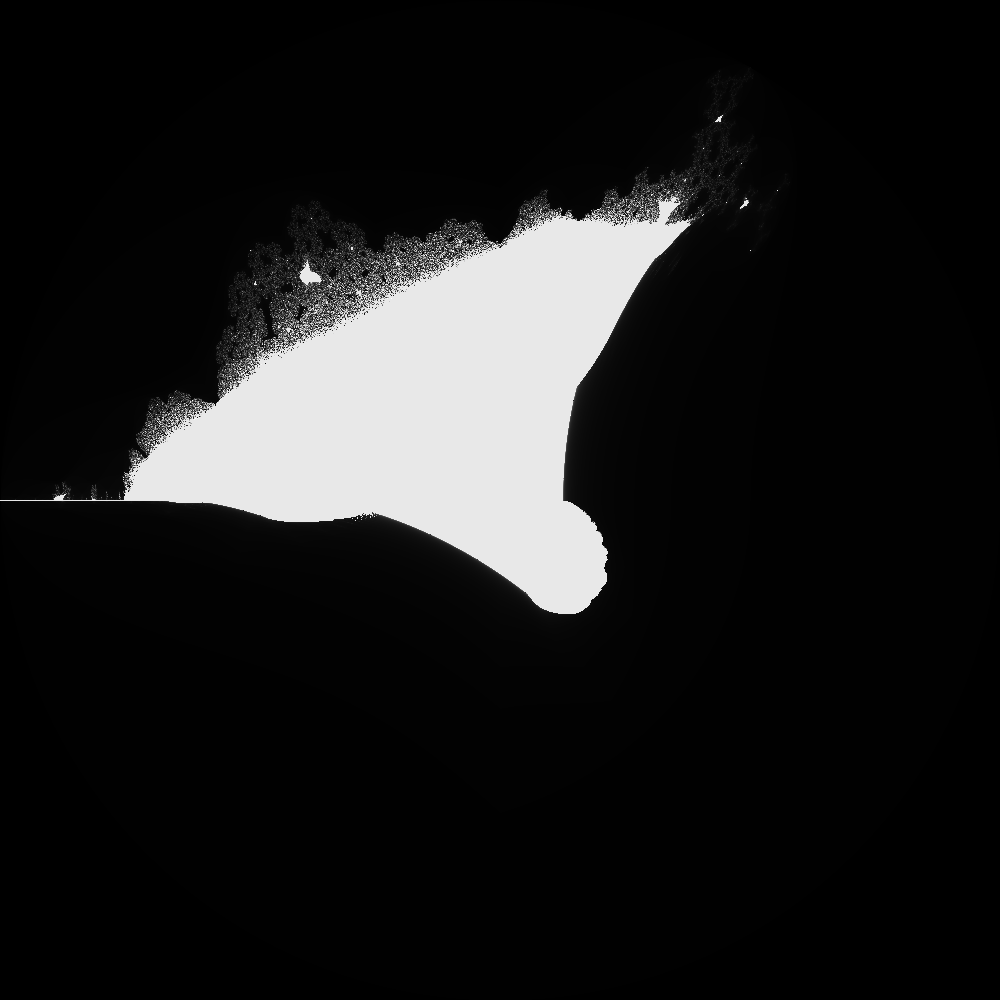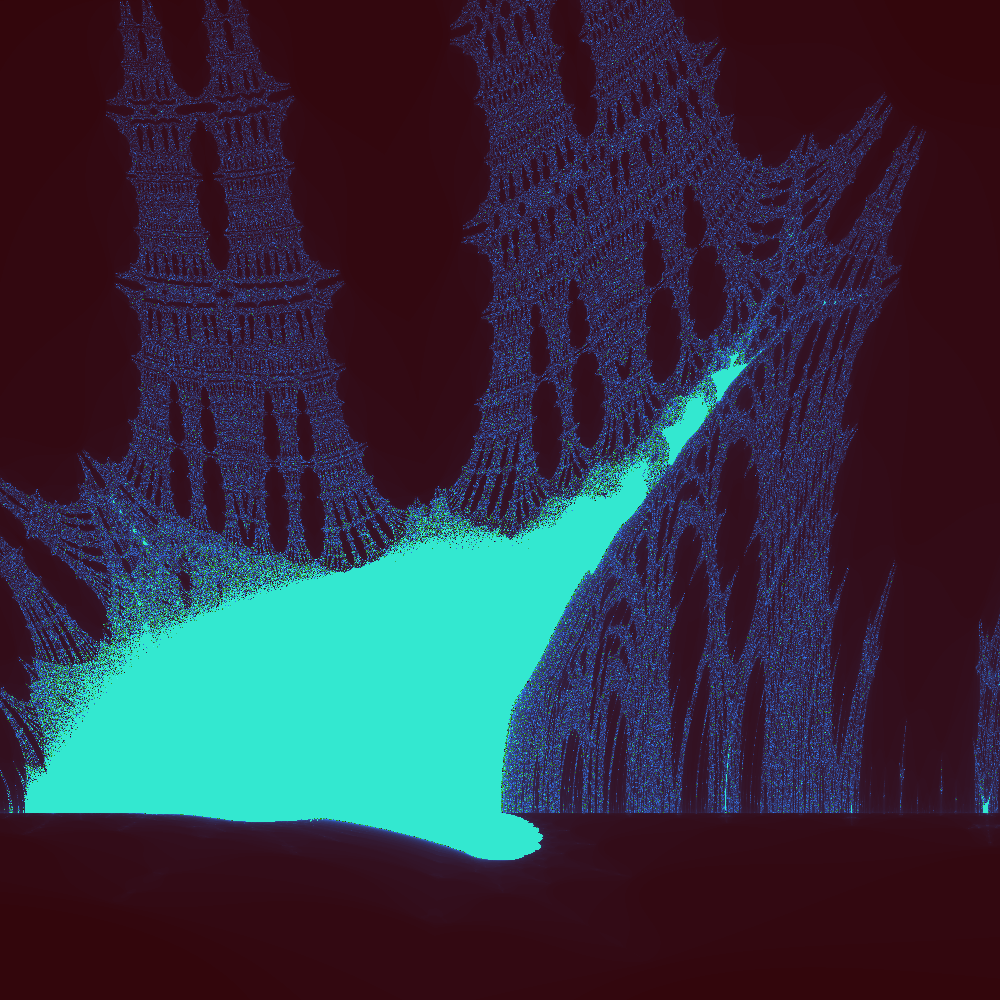Build fractals with a cli:
$ go_fractals --help
A Command Line Application to build fractals in Go.
Usage:
go_fractals [command]
Available Commands:
completion Generate the autocompletion script for the specified shell
help Help about any command
ifs Access Iterated function system commands
julia create a julia set
julia-evolve evolve a julia set through a parameter
mandelbrot create a mandelbrot set
Flags:
-F, --fileName string [OPTIONAL] Set file name (default "fractalOutput")
-f, --fps int [OPTIONAL] The framerate of the video. (default 10)
-H, --height int [OPTIONAL] Set height (default 1000)
-h, --help help for go_fractals
-W, --width int [OPTIONAL] Set width (default 1000)
Use "go_fractals [command] --help" for more information about a command.
$ go_fractals ifs --help
Access Iterated function system commands
Usage:
go_fractals ifs [command]
Available Commands:
evolve iterate through an ifs
image Run an iterated function system
Flags:
--algo-d [OPTIONAL] Use the deterministic algorithm (default true)
--algo-p [OPTIONAL] Use the probabilistic algorithm
-h, --help help for ifs
-n, --numItr int [OPTIONAL] The number of iterations you want to use. (default 1)
-z, --numPoints int [OPTIONAL] The number of initial points. (default 1)
-k, --numStacks int [OPTIONAL] The number of stacks to generate (default 1)
-p, --path string [REQUIRED] The path to your iterated function system file
--probabilities float64Slice [OPTIONAL - comma separated] Specify probabilities of transformations. Must add to 1. If none will calculated based on matrices. Note that a determinant of zero can cause unexpected things. (default [])
-T, --thickness float32 [OPTIONAL] Specify the thickness the stack layer (default 15)
Global Flags:
-F, --fileName string [OPTIONAL] Set file name (default "fractalOutput")
-f, --fps int [OPTIONAL] The framerate of the video. (default 10)
-H, --height int [OPTIONAL] Set height (default 1000)
-W, --width int [OPTIONAL] Set width (default 1000)
Use "go_fractals ifs [command] --help" for more information about a command.
The CLI tool revolves around the user generated file (you can call it whatever you like when you pass it into the CLI).
Here's what a sample file, ifs.txt, looks like:
[2,2][.5,0,0,.5] + [2,1][0,0]
[2,2][-.5,0,0,.5] + [2,1][1,0]
[2,2][.5,0,0,-.5] + [2,1][0,1]
[2,2][.25,0,0,.25] + [2,1][.75,.75]
Each newline represents a new transformation in the system. Information about the transformation is encoded in the following way:
[2,2][.5,0,0,.5] + [2,1][0,0] ->
[number_of_rows, number_of_columns][similiarity_matrix] + [number_of_rows, number_of_columns][shift_matrix]
So, if we look at [2,2][.5,0,0,.5], we see this is a 2x2 matrix. When ordering elements of the matrix, start in the first row, and go across columns, then go tho the second row and so on.
So the identity matrix is:
[ 1 0 ]
[ 0 1 ]
Is represented as [2,2][1,0,0,1].
Note that shifts should always have a number_of_columns = 1, since you are simply moving the points.
Here are several ways to generate the Barnsley fern which is represented by the following IFS:
[2,2][0,0,0,.16] + [2,1][0,0]
[2,2][.85,0.04,-.04,.85] + [2,1][0,1.6]
[2,2][0.2,-.26,.23,.22] + [2,1][0,1.6]
[2,2][-.15,.28,.26,.24] + [2,1][0,.44]
The deterministic algorithm:
$ go_fractals ifs image -p examples/barnsley_fern_ifs.txt --algo-d -n 13
The probabilistic algorithm:
$ go_fractals ifs image -p examples/barnsley_fern_ifs.txt --algo-p -n 67108864
The probabilistic algorithm with custom probabilities for each transformation (This will do a better job of adding the stem compared to the probabilistic algorithm alone):
$ go_fractals ifs image -p examples/barnsley_fern_ifs.txt --algo-p -n 67108864 --probabilities .1,.67,.115,.115
And here it is:
To be Done... currently do not work. (Although you can generate some cool looking things with the --threeDim flag regardless)
You can also generate videos of fractals developing:
This did not work out the way I expected and need refinement. Currently, you rarely get anything interesting. Most of the time they aren't fractals in the rigorous sense.
[2,2][.15,0,0,.5] + [2,1][-.125,-1]
[2,2][.4,.4,-.5,.5] + [2,1][1.2,-.75]
[2,2][.4,-.4,.5,.5] + [2,1][-1.4,-.73]
[2,2][.5,0,0,.5] + [2,1][.01,1.5]
$ go_fractals ifs image -p maple.ifs --algo-d -n 11
Total number of points: 4194304
Elapsed time for Deterministic algorithm: 1.121766417s
(using same # of points as deterministic, hence: -n 4194304)
$ go_fractals ifs image -p leaf.ifs --algo-p -n 4194304
probabilities: [0.06666666666666667 0.35555555555555557 0.35555555555555557 0.2222222222222222]
Total number of points: 4194305
Elapsed time for Probabilistic algorithm: 8.189872041s
$ go_fractals ifs evolve -p leaf.ifs --algo-d -n 11 --fps 3
$ go_fractals ifs evolve -p maple.ifs --threeDim -k 1 -T 50 -n 1000000 --algo-p
Using the escape time algorithm go_fractals also provides the ability to build Julia sets.
There are two julia commands, a regular julia set and julia parameter evolution.
$ go_fractals julia --help
Pass in a complex function for the julia set
Usage:
go_fractals julia [flags]
Flags:
-p, --centerPoint string [Optional] Set the center point for the fractal (default "0+0i")
-c, --color [OPTIONAL] Default Grey Scale
-e, --equation string [REQUIRED] The equation for your julia set
-h, --help help for julia
-m, --maxItr int [OPTIONAL] Set max iterations for time escape (default 1000)
-z, --zoom float [OPTIONAL] Set the zoom; smaller value is more zoomed in (default 4)
Global Flags:
-F, --fileName string [OPTIONAL] Set file name (default "fractalOutput")
-f, --fps int [OPTIONAL] The framerate of the video. (default 10)
-H, --height int [OPTIONAL] Set height (default 1000)
-W, --width int [OPTIONAL] Set width (default 1000)
$ go run . julia-evolve --help
Create a video or 3d stl of the julia set evolving through parameter space
Usage:
go_fractals julia-evolve [flags]
Flags:
-b, --binary [OPTIONAL] save the stl as a binary
-p, --centerPoint string [OPTIONAL] Set the center point for the fractal (default "0+0i")
-i, --complexIncrement string [REQUIRED] Set the increment for the evolution of the parameter
-e, --equation string [REQUIRED] The parameterized equation for your julia set
-f, --fps int [OPTIONAL] The framerate of the video. (default 10)
-h, --help help for julia-evolve
-P, --initialComplex string [REQUIRED] Set the intial parameter for a julia evolution
-m, --maxItr int [OPTIONAL] Set max iterations for time escape (default 1000)
-n, --numIncrements int [REQUIRED] the number of evolution steps to take (default 10)
-s, --solid [OPTIONAL] write the stl as a completely solid object(much larger file size)
-d, --threeDim [OPTIONAL] Create a 3d stl file of the evolution
-z, --zoom float [OPTIONAL] Set the zoom; smaller value is more zoomed in (default 4)
Global Flags:
-F, --fileName string [OPTIONAL] Set file name (default "fractalOutput")
-H, --height int [OPTIONAL] Set height (default 1000)
-W, --width int [OPTIONAL] Set width (default 1000)
The basis for julia sets are the equations you use to build them. I don't have a particularly sophisticated equation parser, but essentially what happens is that your equation will be converted into a golang function. When passing them into the CLI, you need to use golang syntax: z*z - 2 is the equation z^2 - 2.
When creating a regular julia set, you must use z as the function's variable. (this is a consequence of how the parser is built)
When creating julia evolutions, z is the function variable and c is the parameter that will be evolved. For example, z*z - c.
$ go_fractals julia -e "1/(z*z + .72i)" -F example
An evolution associated with the above's fractal set:
$ go_fractals julia-evolve -e "1/(z*z + c)" -f 10 -P "0-0.63i" -n 100 -i "0-0.001i" -F example
What this represents is the evolution through parameter space from:
1/(z*z + -0.63i) ⇒ 1/(z*z + -.73i) in increments of 0.001i.
We can also create 3d stl models of the parameter evolution.
Try:
$ go_fractals julia-evolve -e "z*z + c" -P "-.5+0i" -n 10 -i ".0625+.0625i" -F exampleSTL -W 200 -H 200 --threeDim
Note that this is still very finicky and can produce very large files if you aren't careful.
By default we write to an ascii file, but you can also try to write with binary using --binary
The stl models can also produce very cool 3d structures if you choose your path through parameter space well enough.
$ go_fractals julia-evolve -e "z*z + c" -P "-.5+0i" -n 65 -i ".008333+.008333i" -F exampleSTL3d -W 150 -H 150 --threeDim
If you have a 3d viewing software, I really recommend taking a look at the stl file for the above generation. Online this stl viewer was very useful for testing this project.
Though it does not do it credit, here is an image of it.
You can just begin to make out the evolution of the Julia sets over parameter space.
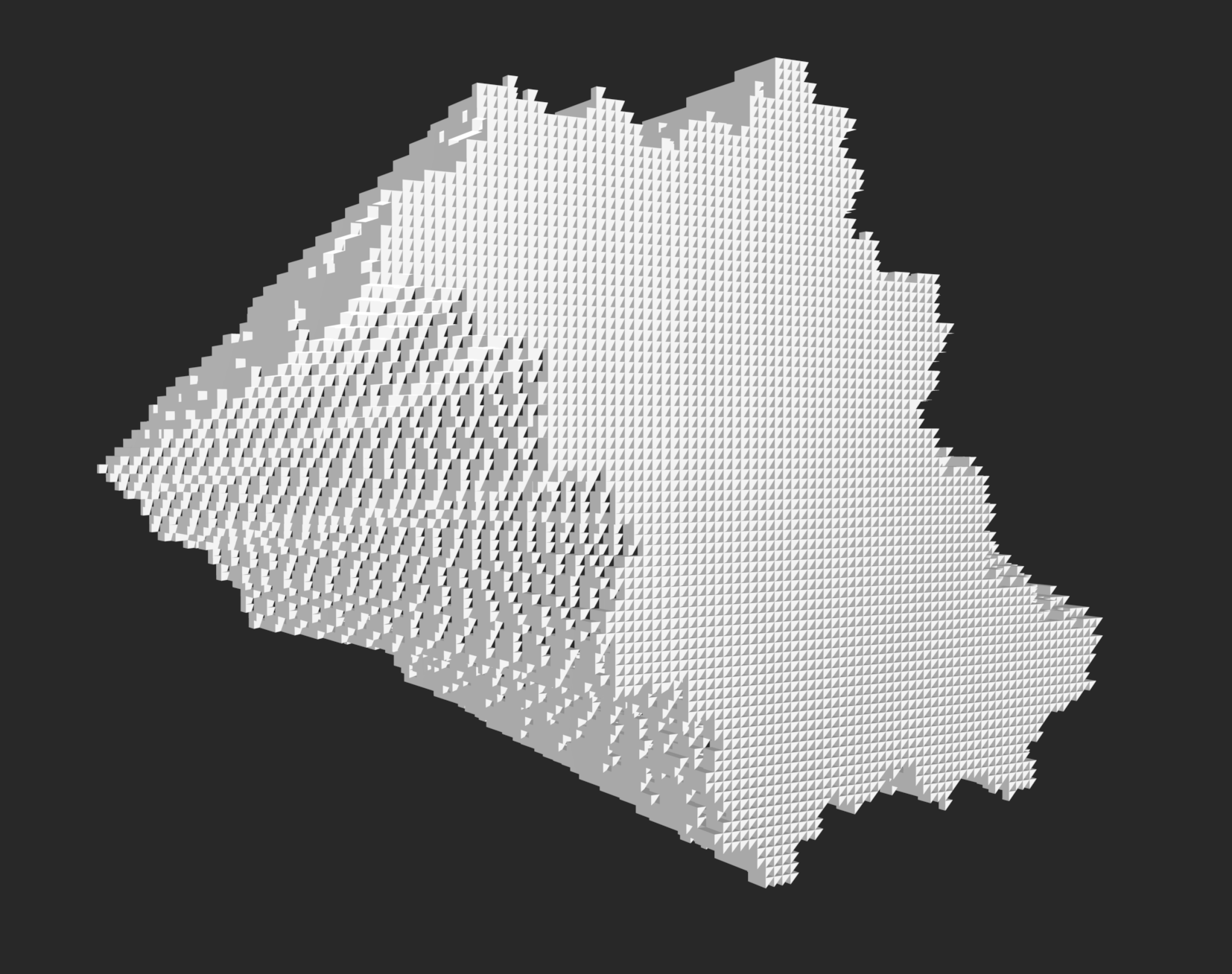
If you have access to a 3d printer, that's were the fun really begins.
3d printed it looks like this:
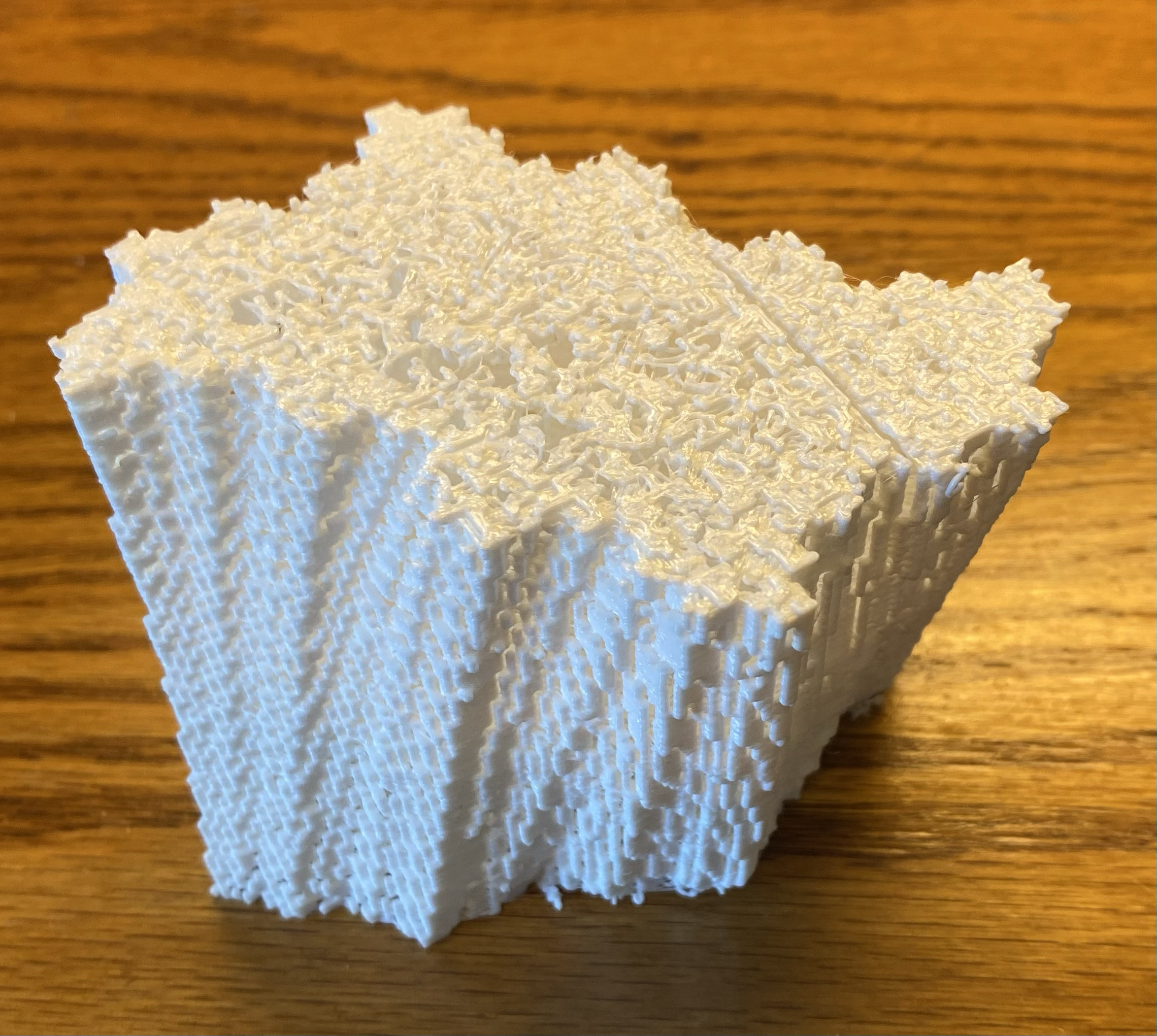
Using the escape time algorithm, go_fractals provides the ability to build general Mandelbrot sets.
$ go_fractals mandelbrot --help
Pass in a complex function for the mandelbrot set
Usage:
go_fractals mandelbrot [flags]
Flags:
-p, --centerPoint string [Optional] Set the center point for the fractal (default "0+0i")
-c, --color [OPTIONAL] Default Grey Scale
-e, --equation string [REQUIRED] The equation for your mandelbrot set
-F, --fileName string [REQUIRED] The file name in the downloads folder
-h, --help help for mandelbrot
-m, --maxItr int [OPTIONAL] Set max iterations for time escape (default 1000)
-z, --zoom float [OPTIONAL] Set the zoom; smaller value is more zoomed in (default 4)
Global Flags:
-f, --fps int [OPTIONAL] The framerate of the video. (default 10)
-H, --height int [OPTIONAL] Set height (default 1000)
-W, --width int [OPTIONAL] Set width (default 1000)
Equations are built in the same way as Julia set equations.
The classic Mandelbrot set:
$ go_fractals mandelbrot -e "z*z + c" -F mandelbrot
The burning ship:
$ go_fractals mandelbrot -e "complex(math.Abs(real(z)),math.Abs(imag(z)))*complex(math.Abs(real(z)),math.Abs(imag(z))) + c" -F burningShip
The burning ship, zoomed with color, centered at -1.75 + .025i:
$ go_fractals mandelbrot -e "complex(math.Abs(real(z)),math.Abs(imag(z)))*complex(math.Abs(real(z)),math.Abs(imag(z))) + c" -F burningZoomColor -p "-1.75-0.025i" --color -z .08

